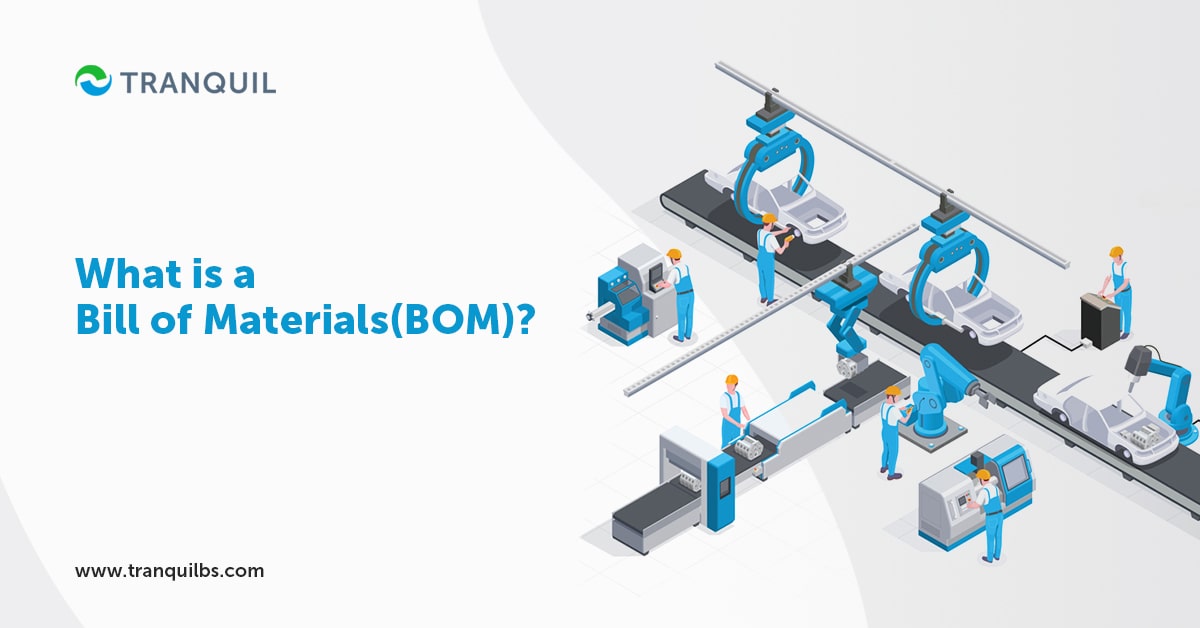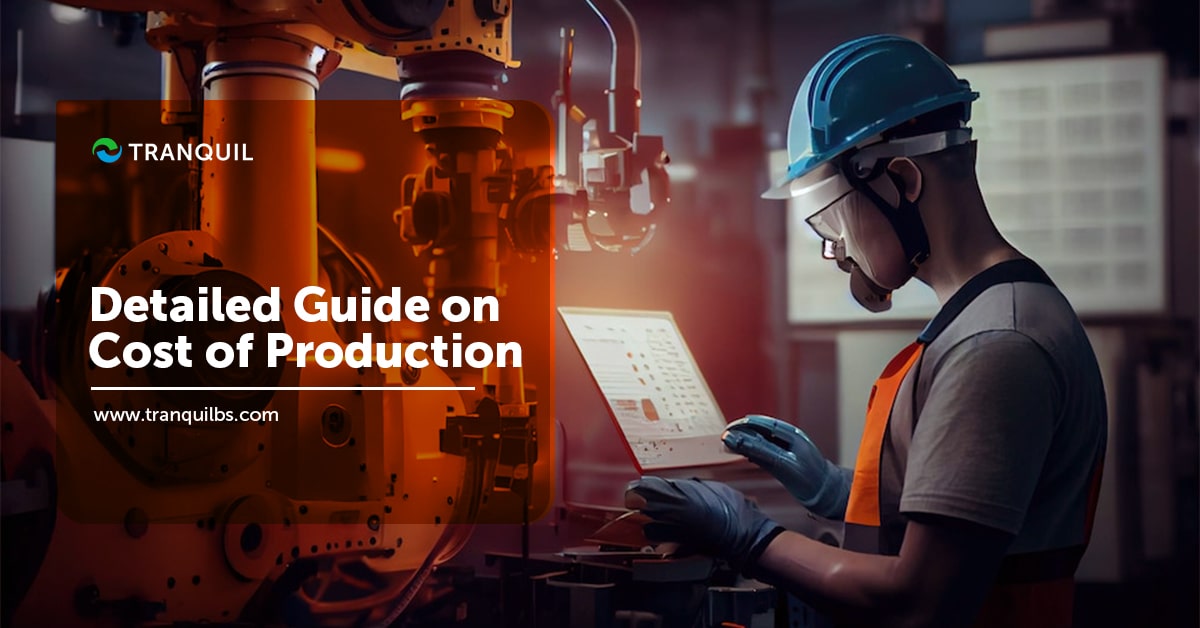
What is a Bill of Materials (BOM)?
If you are a manufacturer or want to start a manufacturing business, a Bill of Materials is a crucial document that you must know about.
What Is a Bill of Materials (BOM)?
A bill of materials is a detailed list of raw materials, parts, and directions needed for the construction, production, or repair of goods or services.
It is normally present in a hierarchical arrangement, with the finished product at the highest level, and materials and individual parts at the lower levels.
ALSO READ: Why Do Businesses Need Purchase Requisitions?
Understanding a Bill of Materials

A BOM is like an instructional document that is used in the production of goods, and it lists everything that is required to manufacture a product.
You could say that the process of product manufacture and assembly begins with creating a bill of materials.
Making a proper BOM is essential as it helps you make sure that all required components are available when you need them.
This guarantees a smooth and efficient assembly process.
With an erroneous bill of materials, your production may get halted, spiking operational expenses; after all, you need time to find the missing components, begin the next manufacturing order, or to figure out the right assembly process.
There are various types of bill of materials, based on the specific business requirements and project type.
Today we will take a detailed look at BOM – types, what it contains, its advantages, and more.
ALSO READ: Challenges Facing Purchasing and Supply Management
Bills of Materials Display Structure
The information in a BOM is displayed either as an explosion or implosion.
Where the highest-level assembly is cut up into individual parts at the lower levels, it is called an explosion display.
Conversely, when the individual parts at the lower levels are linked to the highest-level assembly, it’s called an implosion display.
ALSO READ: Make to Order vs Make to Stock
Let’s understand this with the help of an example: A car can be exploded into brakes, gears, clutch, steering wheel, seats, indicators, headlights, and so on.
The requirements for the ABS can be imploded into the requirement for the brakes; the chips, control units, and so on can be imploded into the sensors; together, both (along with other components of course) can be imploded into the requirements for the entire automobile.
Structure of a BOM

The structure of information displayed in a bill of materials follows a hierarchy, and the finished product is usually showed on top.
The document includes the quantity and cost of each material or part, descriptions of those parts, product codes, and any additional specifications.
The most commonly used methods to represent information in a BOM are single-level and multilevel.
ALSO READ: What is ABC Analysis in Inventory Management?
1. Single-level BOM
As the name suggests, it only has one level; it’s a simplistic list of each assembly or sub-assembly which is displayed once along with the respective quantities for each product.
Basically, it goes through a single level of assembly to result in a finished good.
It’s easy to create and is suitable for parts, or between assemblies and sub-assemblies.
In the event of a product failure, it can become difficult to identify the parts that have to be repaired or replaced, when you have a single-level BOM.
ALSO READ: What is Physical Stock Verification?
2. Multilevel BOM
This is more time-consuming and cumbersome to develop; however, it provides more details and specifics regarding the parent and child components.
The total quantity of materials needed is mentioned, with the product structure displaying the relationship between parent and child, and between assembly and sub-assembly.
It shows multiple assembly levels before the finished product is ready.
A bill of materials forms the basis for manufacturing planning systems, as the information contained in it includes the fundamental data for resource planning, material provision for manufacture, product costing, plant maintenance, and similar business processes.
In other words, it brings together all the information necessary for building the final product.
Ergo, is used in several departments in addition to manufacturing – design, materials management, and so on.
ALSO READ: Tips For Efficient Stocktaking
Types of Bills of Materials

BOMs are needed not only to build products but also when you need to order replacement components.
It minimizes chances of errors or other issues when you need to repair products.
You can plan better and be more accurate when it comes to procurement orders.
Three main BOM types are engineering, manufacturing, and sales, and then a few other types which are not used by all businesses.
ALSO READ: What is Product Bundling?
1. Engineering BOM
This document describes and details the finished product design, and contains assemblies and parts designed by the engineering department, along with every alternative and substitute component numbers as shown in the diagram notations.
In every line of the BOM, you will find information like product code, name and number of the part, its revision, the product features, description, UOM, quantity, measurements, weight, and any other specification as required.
The Engineering bill of materials is usually created by engineers using a CAD diagram, and there are often multiple BOMs for a single finished product.
This document displays the parts structure from a functional viewpoint.
ALSO READ: What Is Cloud Data Protection?
2. Manufacturing BOM
This lists every component, assembly, and sub-assembly necessary for the production of a finished product that can be shipped; this means it includes packaging materials that are needed to deliver the item to the end user, or customer.
It mentions the processes that need to be carried out before the product is completed, and has every bit of information needed for all activities connected to manufacturing.
In other words, information regarding components that have to be processed before assembly, with an explanation of how the different parts are connected to one another.
It is an important element in the management of the product’s lifecycle.
This BOM is shared with ERP, materials requirement planning, and other business systems which are utilized by the organization for the procurement of materials and manufacture of the final product.
ALSO READ: Difference Between Procurement And Purchasing
3. Sales BOM
This document contains details of the product before assembly in the sales stage, and the list of finished goods and parts needed for its production are mentioned distinctly in a document called the sales order.
The finished goods are managed as sales items instead of inventory items in this BOM.
Though there is a typical structure for a bill of materials, there are likely to be slight variations in each type of BOM when it comes to how much detail it contains and the variation in structure.
While Engineering BOMs are more likely to list components that perform a specific product function, a manufacturing BOM will list every item that is required to manufacture that product.
There are other, less common BOMs:
4. Configurable BOMs
If you manufacture highly customizable products, you need configurable BOMs as they will help you fulfil tailored specifications of customers, and identify the raw materials, materials for labeling, packaging, and so on.
Assembled computers, automobiles, and certain hardware or software are examples where such BOMs may be necessary.
ALSO READ: ERP Configuration vs. ERP Customization vs. ERP Personalization
5. Production BOM
This is essentially the earlier half of the manufacturing BOM which contains a list of parts and subassemblies required to product the parent item, and forms the foundation for a production order.
6. Assembly BOM
As you may have guessed, this is for the latter half of the manufacturing BOM where the parent product is listed as a sales item instead of an inventory item (similar to a sales BOM)
ALSO READ: Understanding Different ERP Systems
7. Template BOM
This is just a standard list of parts for products that require regular servicing.
The parts denote the sub-parts of the object to be serviced.
This BOM is useful in tracking the sub-parts that were replaced, repaired, or services.
8. Software BOM
This BOM is used by software development firms to list what tools and technologies are required to build certain software systems.
This could include backend technologies, extensions, frontend technologies, databases, programming languages, and so on.
These BOMs help developers to make sure that various software elements are secure, updated, and can function together cohesively.
ALSO READ: Top Trends of ERP System For The Future
What Do You Need to Create an Effective BOM?

Now that you’ve seen what is a BOM, and what types are there, let’s see how to build one:
- Different level numbers signify where the part fits in the hierarchy of the BOM
- Part names provide information about them and help in identification
- Part numbers are a shorthand method of parts identification as they denote information about the part. These are similar to SKUs used to identify product variants and are hence also called intelligent part numbers. Intelligent numbers have alphabets that signify something specific; non-intelligent numbers have just serial numbers which carry no further meaning.
ALSO READ: What is SKU Rationalization?
- Manufacturer’s names also help in parts identification
- Part phase helps identify the specific phase of the product lifecycle where the part is used – design, revision, and so on.
- Quantity indicates how much of a part is required, along with a UOM for each type of part, like a number, grams, liters, and so on.
- Alternatives signify if a component can be changed for another in case the original is not available.
- Description of each component which enables the differentiation among similar components by measurements, colors, and so on.
ALSO READ: Guide on Stock Adjustment and Stock Transfer
- Priority analysis which describes crucial components and helps in the prioritization of their purchase; like, parts that are more expensive and take more time in reaching, may be prioritized.
- Procurement specification defines the manner of purchase and manufacture of parts.
- Notes and/or comments to record unforeseen changes and notes of the project progress, including diagrams or pictures of assemblies and parts.
ALSO READ: What is Goods Received Note and Why is it Important?
What are the Advantages of Using a BOM?

A bill of materials brings greater accuracy and efficiency to the manufacturing process, by laying out an in-depth strategy and design which your teams can follow with ease. When a BOM is well thought-out and developed, it can help in:
- Records maintenance
- Monitoring and planning materials requirements
- Controlling budgets
- Planning raw materials procurement
- Estimating cost of materials
- Inventory management
- Sticking to a time-table or schedule
- Being on top of shortage of materials, speeding up charges, and managing downtime efficiently whether planned or unexpected
- Wastage reduction
- Recognizing the reasons for the failure of products
- Quick replacement of defective parts
- Identification of software components’ vulnerabilities
- Enhancing the security of your supply chain.
Additionally, bills of materials help to make sure that third-party contract manufacturers are being effective and accurate in their production.
BOMs are very useful for businesses that implement lean production methods and processes that are based on continuous improvement.
The chief aim of lean manufacturing is waste reduction, and a BOM provides a roadmap that helps you in achieving that.
ALSO READ: HCM vs HRM
As a manufacturer, a bill of materials is absolutely essential; but it may be a bit tiresome for you to have to do it from scratch for every product. This is where Tranquil Cloud ERP comes in. Our cloud-based business software has robust inventory management, procurement management, and production management modules that will automate and streamline all the mundane tasks you have to perform, and ensure greater accuracy, efficiency, reliability, and productivity. This goes for the Bill of Materials too. To see for yourself how it works, schedule a demo of our software right away!



